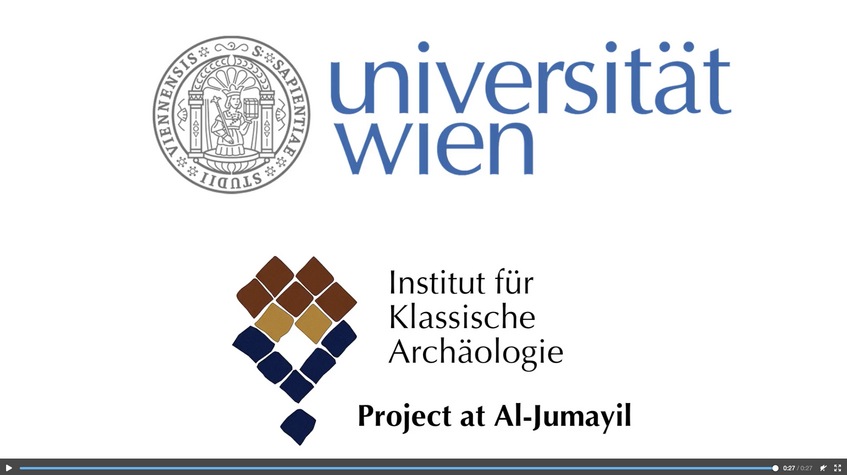Excavation 2023
The excavation campaign part of the FWF-Project “rethinking Periphery in Late Antique Arabia” (Projektnummer: FWF-P 35326) took place from the 28th of August to the 27th of September 2023. It was held together with the “training excavation” of the Department of Classical Archaeology of the University of Vienna.
The aim of the archaeological campaign was to complete the investigation of the north church (area F05), partially excavated in the past 2021 and 2022 seasons. In addition to a new trench in the apse of the adjacent south church (area F06).
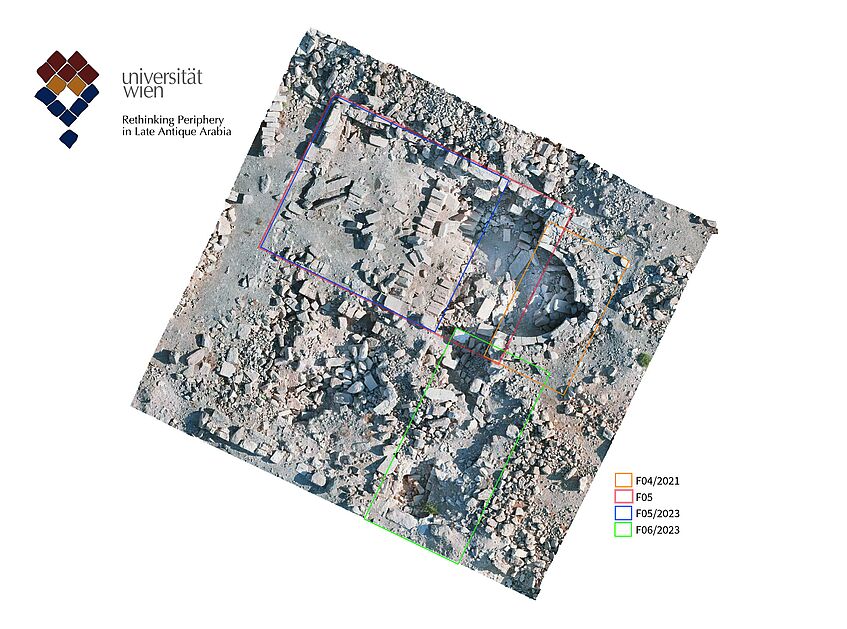
The church complex with area F04 (orange) F05 (red = whole area F05, blue = excavation area of 2023) and area F06 (green)
The North church - F05
The excavation Area of F05 was comprised by the area delimited by the 2nd pilaster to the western outer wall of the nave of the North church. The upper layers of debris, mostly mixed with modern waste and plastic bags, were exported during the excavation of 2022, reaching the upper level of structural collapse. The removal of the fallen stone layers SE 08 and SE 76 (SE = Stratigrafische Einheit = Stratigraphic Unit), allowed to document in situ the structural collapses of the arches 2 to 5, as well as that of the overlaying stone roof slabs.
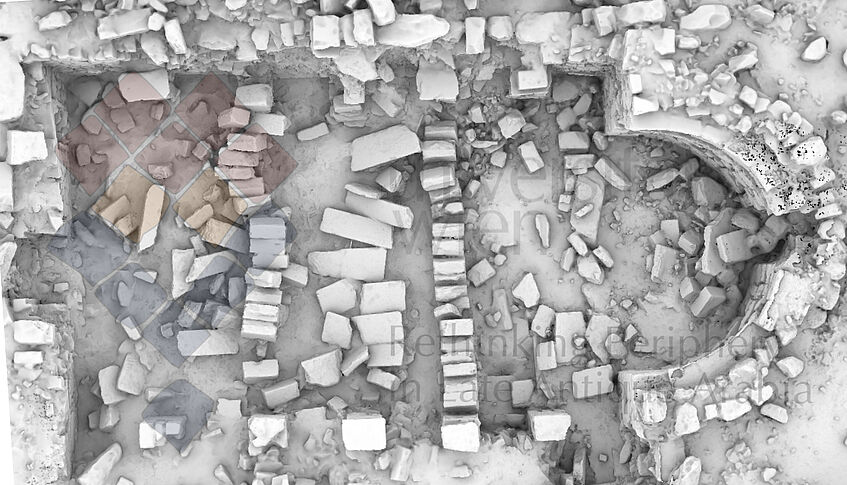
Occlusion Map of the structural collapse of arches 2 and 4, as well as of the roof slabs in F05
Upon the removal of the structural collapse, a structure of loosely bound stone was underneath. Such structure divided the internal space of the church nave into smaller units, and point to the use of the building when the church stopped functioning as an ecclesiastical building. Such use according to pottery finds tentatively ascribed to the end of the 9th century and possibly around the 10th century (the finds are under study). The structures itself were set directly over the abandonment layer of the church complex, which covered the whole mosaic pavement.
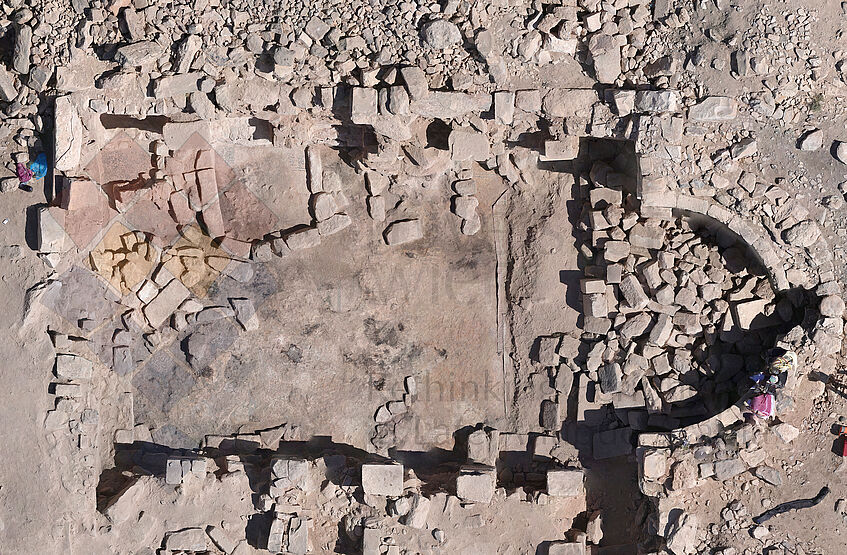
Orthophoto of the structures of a further utilisation phase in F05
The complete excavation of the nave and the mosaic pavement also allowed the identification of several building and restructuring phases of the church and its pavement. The mosaic pavement seems to have had at least three different phases during the use of the church. Some of these phases has heavily altered the iconographic features of the floor. Additionally, the church interior also went through several stages of adjustment and remodelling. South to the main entrance, benches have been added to the construction, as well as a niche between pillars 1BC and 2BC, possibly for the positioning of objects.
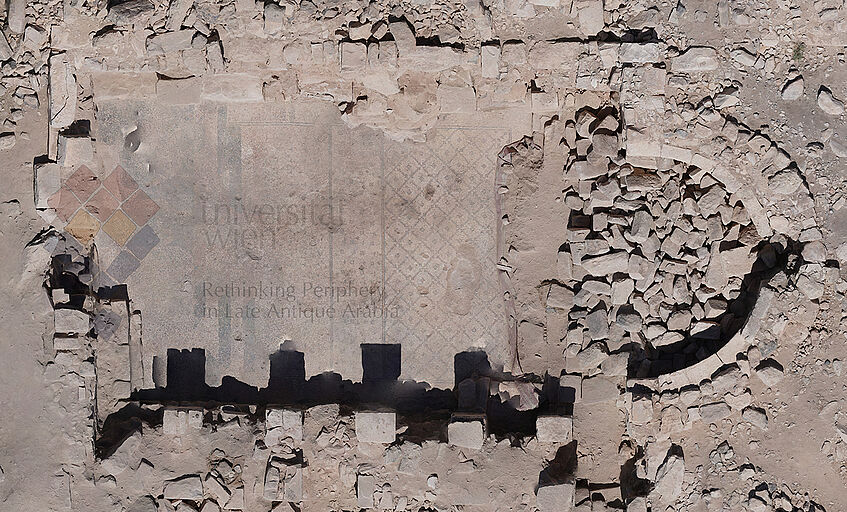
The excavated nave of the northern church (F05)
The excavation of F06
The aim in excavation area F06, the first trench in the adjacent South church, was the exposure of its apse, as well as the connecting corridor between the two apses (F04/2021, F05/2022) and F06. At careful observation of the surface layers, it was clear that looting activity had impacted the conservation of the original stratigraphy. After excavation it could be seen that the central part of the floor of the apse was destroyed by upper mentioned looting activity and only parts of the foundation of the floor, walls and remains of the plaster coating were found intact.
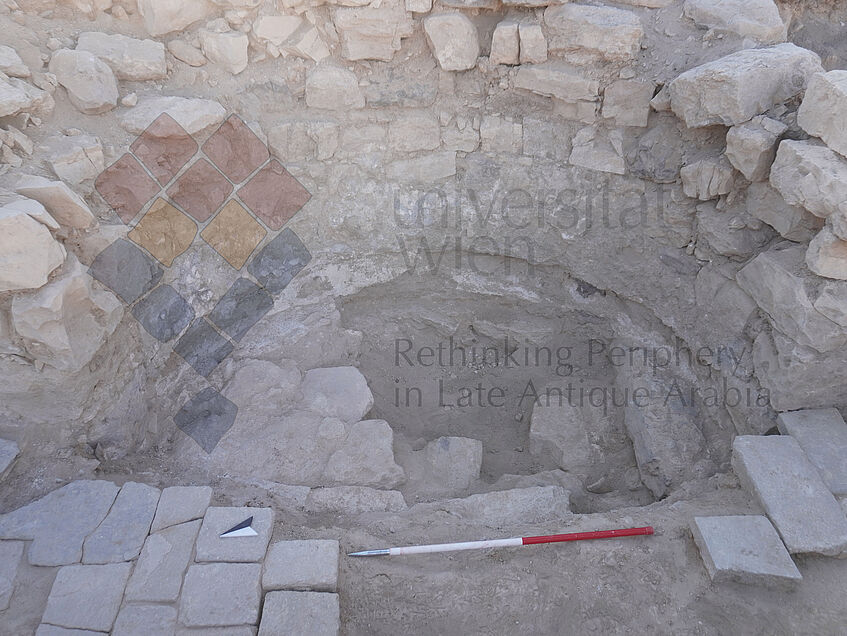
The central area of the South nave after excavation.
Within the presbyteriums area, west of the apsis, the pavement consisting of rectangular stone slabs and reused parts of chancel screens, was partially well preserved, mainly showing areas of voids to the south, were a further looting hole accounts for parts of the destruction. The slab floor was delimited by the posts of the chancel screen, with few remains of chancel posts in place.
The connection corridor between the two apses was fully excavated and in a well-preserved state. The floor is properly paved by large, rectangular slabs, following the floor of the southern presbyterium, and includes one small step from the northern to the southern area. Within the corridor between pillar 1BC and the eastern outer wall, traces of white plaster have been found in-situ, further confirming that the whole complex had been plastered.
The final cleaning works around F06, allowed the discovery of the base of a slab with recess possibly used as reliquary in the area south of the apse, where a second looting whole caused some destruction.
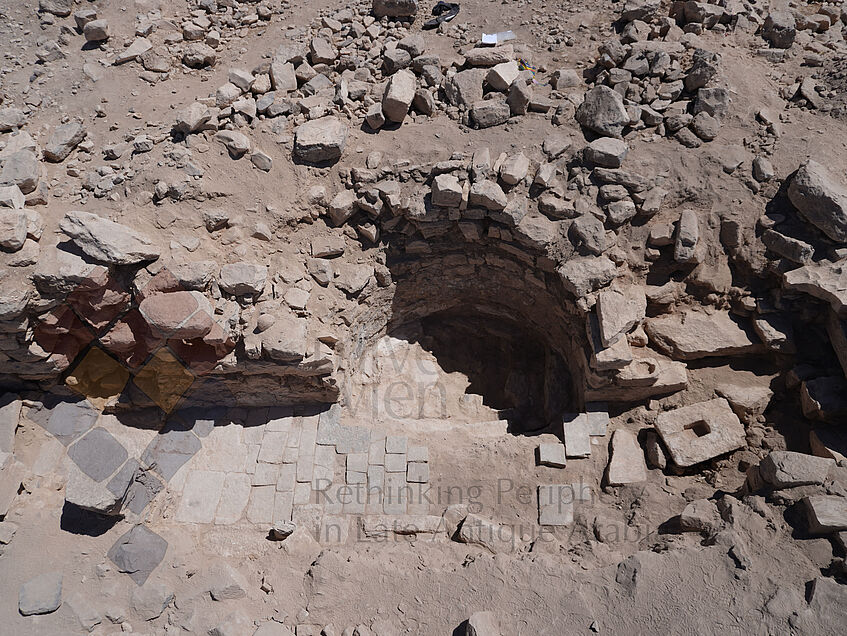
The excavated area of F04.
The uncovering of the connecting passage between the two churches allows the assumption of a simultaneous use of the two buildings, although the South church seems to have been built earlier than the North church. However, additional insights will be provided after the study of the pottery and the further excavation of the southern Nave.

